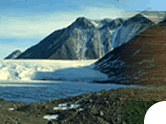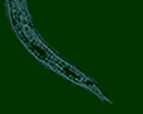Global Litter Invertebrate
Decomposition Experiment
Colorado
Shortgrass Steppe LTER,
USA
Site Manager
Dr.
Diana Wall
Director and Professor
Natural Resource Ecology Laboratory (NREL)
Colorado State University
Fort Collins, CO 80523
Telephone: (+1) 970 491 2504
Fax: (+1) 970 491 3945
Site Description
From 1982 until 1996, the Shortgrass Steppe Long Term Ecological
Research (SGS-LTER) site was located on the Central Plains
Experimental Range (CPER). The CPER is administered by the
U.S. Department of Agriculture's Agricultural Research Service
(USDA-ARS). In 1996, the spatial extent of the LTER site
was expanded to include both the CPER and the Pawnee National
Grasslands (PNG). The PNG represents 78,100 ha of public
lands administered by the U.S. Forest Service (USFS) adjacent
to the CPER, and extending 90 km to the east. The PNG is
discontinuously distributed across northeastern Colorado
because these lands are the result of acquisitions of private
land beginning in the Dust Bowl era. By expanding to the
newly defined site, the realm of inference was increased
to 23% of the SGS.
Site Location
The SGS-LTER site is 8 km north of Nunn, Colorado, approximately
halfway between Greeley, Colorado and Cheyenne, Wyoming,
on the Central Plains Experimental Range (CPER). The 6280-ha
tract of shortgrass rangeland located in the piedmont of
north central Colorado approximately 61km northeast of Fort
Collins and the campus of Colorado State University (lat.
40°49'N; long.104°46'W; elevation 1650 m).
Site Area
The CPER is a 6280-ha research area maintained by the USDA
Agricultural Research Service for applied rangelands research.
Site Elevation
Site elevation ranges from 1200-2000 m.
Annual Rainfall
Annual precipitation at the CPER averaged 322 mm over the
past 51 years and ranged between 107 and 588 mm. Approximately
70% of the mean annual precipitation occurs during the April
to September growing season.
Annual Temperature
Mean monthly temperatures range from -4 to 22 degrees C
seasonally and have a daily average max-min range of 17 degrees
C.
Soil type
The soils of the CPER are dominantly Aridic Argiustolls (Mollisols) and Ustic Haplargids (Aridisols)formed in alluvium, wind-reworked alluvium and loess. Ustic Torriorthents and Ustic Torrifluvents (Entisols) occur in areas of more recent alluvial or eolian activity, particularly along modern drainages.=A0 Typic Haplusterts (Vertisols) occur in several of the low-lying, closed depressions on the site.
The soils of the CPER are relatively young, considered Holocene in age.
Native Forest/Vegetation Types
The vegetation of the SGS is dominated by shortgrasses (64%),
forbs (7%), succulents (21%), and half-shrubs (8%). The key
species of these groups are Bouteloua gracilis and Buchloe
dactyloides; Sphaeralcea coccinea; Opuntia
polyacantha; and Chrysothamnus nauseosus, Gutierrezia
sarothrae, and Eriogonum effusum, respectively.
Average above ground net primary production is 125 g/m2 and
ranges from 60 to 180 g/m2 depending on available soil water.
Major differences in vegetation structure occur in saltgrass
meadows dominated by Distichlis stricta and Sporobolus
asper, and on floodplains where the shrub Atriplex
canescens is an important component.
Principal Biome/Ecoregion
The climate of the SGS is typical of mid-continental semiarid
regions in the temperate zone except for the strong influence
of the Rocky Mountains approximately 60 km to the west.
Photo Gallery
|
|
|
|
|
|
Photos courtesy of
CPER employees and Diana
Wall's lab group
|
|












